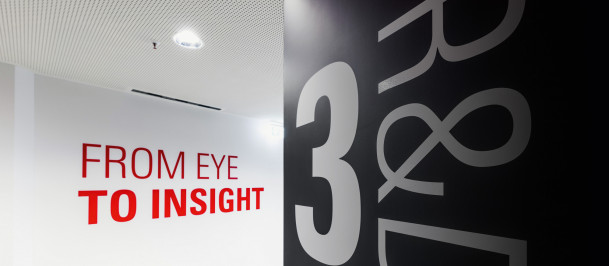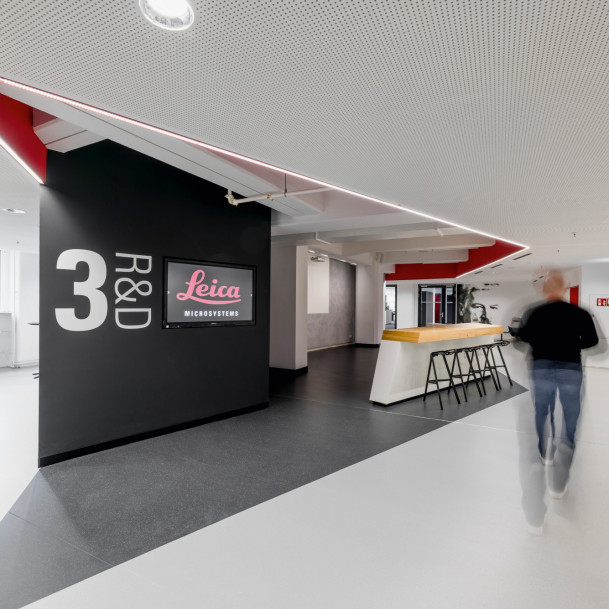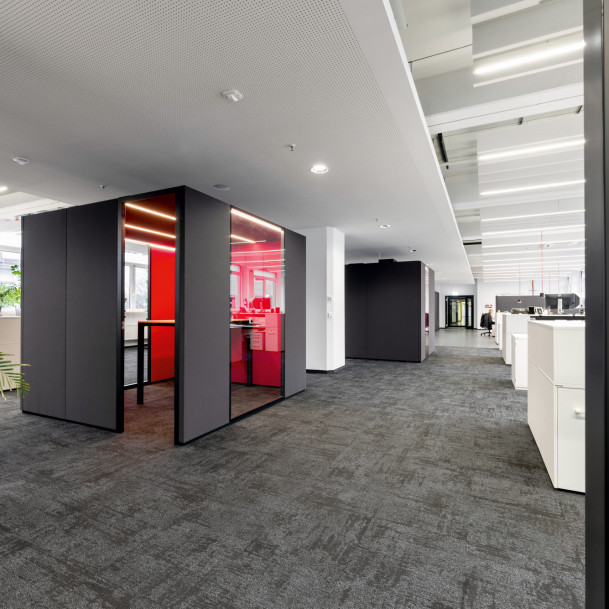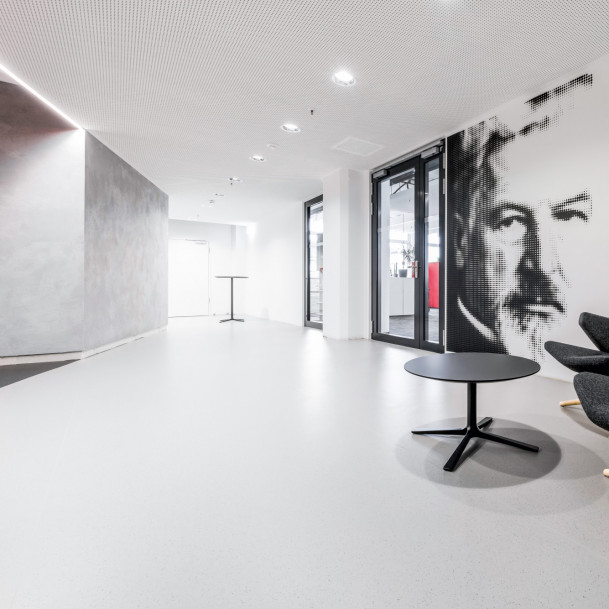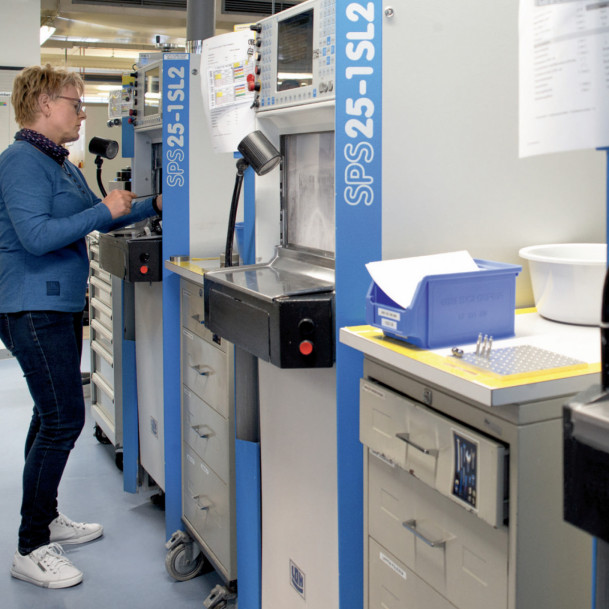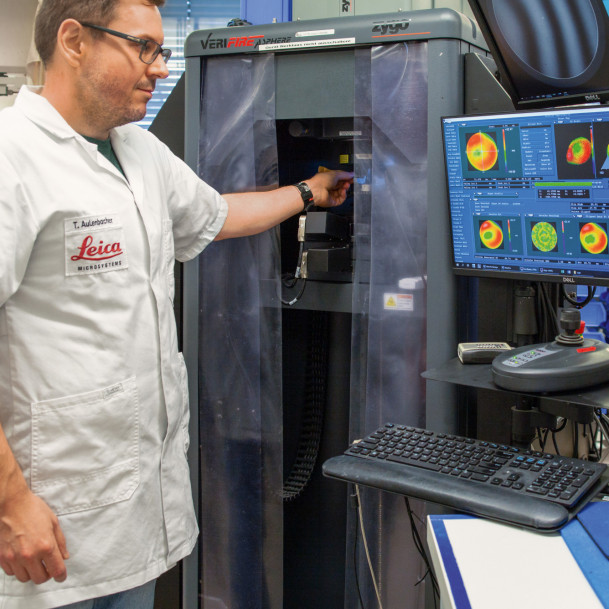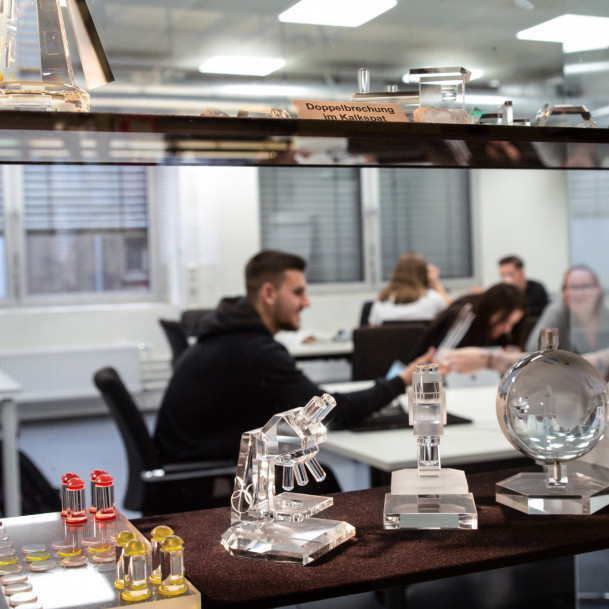Opto-Digital Technologies
At Leica Microsystems, outstanding expertise in optics meets artificial intelligence while opto-digital platforms combine the best of both worlds. The new research and development center in Wetzlar provides a look into the future.
Markus Limberger and Sebastian Tille greet us in the reception area of Leica Microsystems’ main building. The journey upwards resembles a short travel through time. We take the paternoster, a reminder of times past, and arrive on the third floor where the future has already begun. A few months ago, the company in Wetzlar inaugurated an ultramodern research and development center. “Here, innovation does not only become tangible but also visible,” says Markus Lusser, president of Leica Microsystems. For him, the innovative spirit of Leica has always been an integral part of the corporate culture in microscopy for more than 170 years. “Only pioneering innovations allow us to enable the work of scientists and surgeons worldwide,” Lusser explained.
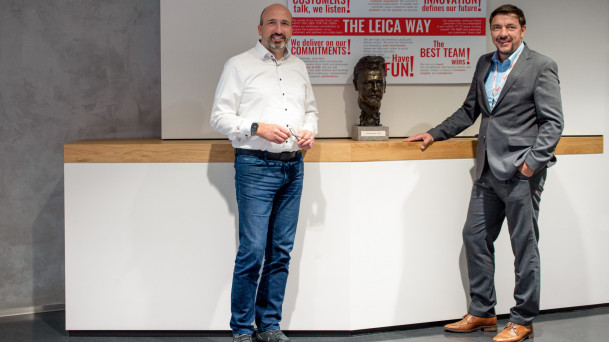
»Innovative collaboration models are beneficial for the development of innovative technologies. That’s where our new research and development center provides the very best conditions.«
Sebastian Tille, Global Director Open Innovation
Sebastian Tille (links) und Markus Limberger im neuen Foyer.
Developing complex microscope systems based on innovative technologies
It is evident how much this investment contributes to a company culture rich in innovations. The tagline in the entrance area sets the agenda: “From Eye to Insight” – that is from merely looking at something to gaining knowledge; from classical optics to integrated opto-digital microscope systems with an ever-increasing performance spectrum; from precise optical and digital visualization to integrated AI-models. “Developing complex microscope systems based on innovative technologies requires an entirely different, closer way of collaborating across boundaries of departments as well as with external partners from industry and academia. And innovative collaboration models are beneficial for the development of innovative technologies. That’s where our new research and development center provides the very best conditions,” explains Sebastian Tille, Global Director Open Innovation.
Hence, it is not surprising that the new area “3rd floor” is not a hermetically sealed-off high-security area where ingenious masterminds are hatching groundbreaking ideas. Instead, the research and development center comes across astonishingly open. We rather get the impression that here, development processes are part of a living organism. Employees from various disciplines pursue their tasks in a work environment which is fitted with latest equipment and designed in an inspiring way. A long counter in the center area invites to informal conversations and casual meetings. Transparency and flexibility characterize the workplace. Handwritten post-it notes and process charts sticking on big glass panes are a reminder that innovation definitely depends on creative adaptation, too. Things are then getting real at the workstations where the next generation of high-end products are undergoing complex alpha and beta testing.
Integration of AI into opto-digital platforms
The innovative development and integration of opto-mechanical and digital components into opto-digital systems is an interdisciplinary and multidimensional affair. And Leica Microsystems has gained and cultivated outstanding expert knowledge in all fields of competence over the decades. From the inside but also through acquisition and business development. In the new research and development center Wetzlar, all strings come together, and from here they spread. But never only in one direction. And, as Sebastian Tille points out: “For us, technological innovations are not an end in themselves. Our goal is to deploy cutting-edge technologies in order to make our users more efficient and more productive.”
For example AI: Everybody wants it. Everybody is talking about it. Artificial intelligence always has a nice and particularly innovative ring to it. What people often neglect to mention is how AI-models can be utilized effectively for a specific purpose. At Leica Microsystems the development teams strive for useful integration of AI into opto-digital platforms. “AI-models actually provide us with opportunities to create something genuinely new in line with the interests of the users”, Sebastian Tille explains: “For example, if I want to identify and detect cell nuclei, I’ll be able to do that much more efficiently with the assistance of artificial intelligence as a learning system.”
It’s no wonder that the microscopy solutions of Leica Microsystems are more and more based on digital innovations. For they assist users in documenting, processing, and analyzing their microscopic images. Combined with optical cutting-edge technology they provide access to new insights in biomedical research as well as to new methods and processes in medical and industrial applications. The same applies to routine work in laboratories or efficient workflows in industrial quality assurance processes as well as to research of multidimensional dynamic processes in living cells, to ophthalmic and neurosurgery or to the analysis of pharmaceutical-chemical processes.
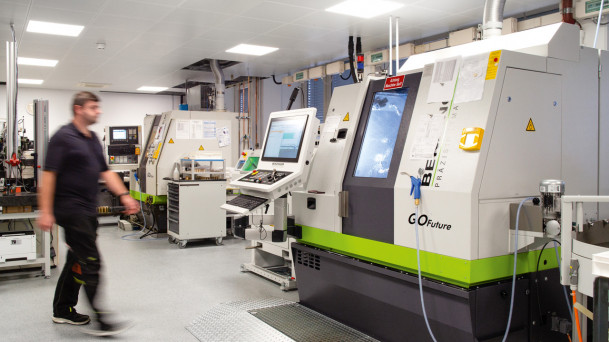
»The technological developments which we are working on and putting into effect in Wetzlar today, will be applied in our production facilities in Singapore and Shanghai tomorrow.«
Markus Limberger, Vice President Global Operations
Together with changing requirements, the manner of collaborating will change
For Markus Limberger, Vice President Global Operations, this innovative spirit has far reaching aspects when it comes to optimizing manufacturing processes in order to meet the requirements of opto-digital imaging. For: “We will only be able to implement innovations into products when we set up our production in a similarly innovative way.” What he means becomes clear when he talks about the mentioned far reaching aspects: “Our optics are expected to become ever more precise – to accomplish that, we have extensively modernized our optics production in Wetzlar in the last couple of years and we will continue doing so. Digital transformation involves putting ourselves in a position where we have to identify and analyze complex production data and measurements by means of intelligent software programs – for that, we will need even more capacity and competences in data management. When we invest in a production facility today, we generally do not source from one single provider but from a combination of partners and competence centers. That way, the jointly developed solution will cover the whole manufacturing workflow and not just individual processing steps.”
Markus Limberger could mention many more examples which he must and will keep in sight on the way into the future. There is also the fact that together with changing requirements, the type of work and in particular the manner of collaborating will change: “Besides the continuously increasing demand on the skills and knowledge of our employees in our manufacturing facilities, this also affects the transformation of the global procurement approach of Leica Microsystems. The higher the integration level of components and modules we source from external partners, the deeper and broader the technical knowledge required by our experts in the purchasing departments.” In practice, Limberger also sees potential arising from the collaboration with partners and suppliers in the region: “We are quite interested in the exchange with universities or spin-offs who often bring new and unconventional ideas which they want to refine together with the industry.”
Wetzlar plays a pioneering role in the global production network of Leica Microsystems
But he has one particular concern: the imminent shortage of qualified young talents. Though one can easily imagine that skilled specialists from any academic field will feel they are in the right place when working in the new research and development center. Especially since the exchange with young colleagues from various backgrounds in the worldwide locations of Leica Microsystems makes for an additional incentive. But the quality of the vocational training as a precision optician also grows with the requirements set on the products. The traditional skills in the production of optical components and systems still count as the basics in precision optics training – for they are the foundation of what makes the step towards opto-digital systems possible in the first place: software-assisted alignment and assembly of optical elements which physically establish the connection from the object to the digital “eye” of the microscope, i. e. the image sensor or detector. “To be innovative as a company and attractive as an employer at the same time – that will be more and more crucial in the near future”, Markus Limberger is convinced.
No matter if it comes to the new research and development center or to optics production, if it is about AI or Industry 4.0 – Wetzlar plays a pioneering role in the global production network of Leica Microsystems. “The technological developments which we are working on and putting into effect in Wetzlar today, will be applied in our production facilities in Singapore and Shanghai tomorrow,” Markus Limberger says. It is more than gratifying that such initiatives originate in Wetzlar. For the innovative strength of the company so rich in tradition. For the city. And for the whole region.
Company Profile
Leica Microsystems develops and manufactures microscopes and scientific instruments for the analysis of microstructures and nanostructures. The company is one of the market leaders in compound and stereo microscopy, digital microscopy, confocal laser scanning microscopy with related imaging systems, electron microscopy sample preparation, and surgical microscopes. Headquartered in Wetzlar, Leica Microsystems has six major plants and product development sites around the world. The company is represented in over 100 countries, has sales and service organizations in 20 countries, and an international network of distribution partners. Leica Microsystems is part of Danaher.
